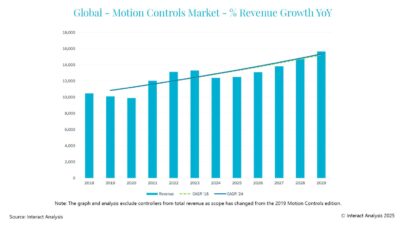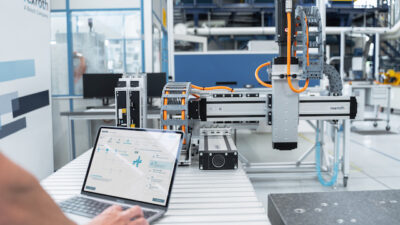While considered mainstream technology, fieldbus adoption in process industries is still far from commonplace. The picture for users remains upbeat, but incomplete in many respects. Why?
While the fieldbus wars of the 1990’s have settled down to detente, most combatants likely share some bemusement that fieldbus adoption in process plants has not advanced farther, particularly in North America and Europe. On the other hand, among the new process plants being built in Asia and the Middle East, it’s relatively rare to find a Request for Quote (RFQ) going out that doesn’t include large scale deployment of fieldbus platforms.
Digging into these conflicting pictures reveals a technology that offers much under the right conditions, but is far from universal. What are the advantages of fieldbus architecture in process manufacturing, and what is the future?
Basic fieldbus technology
Once process plants moved out of the pneumatic control era into analog electronic communication, users sought ways to employ digital communication to send data back from instruments and valves without needing a separate cable for each. Ultimately two platforms emerged as leaders for process applications: Foundation Fieldbus (FF) and Profibus PA (PPA). Both of these platforms can carry power to individual devices and bring back the complex data from process instrumentation with one cable that can “daisy chain” from transmitter to transmitter. One chain of devices is called a “segment” and controllers talk to each to gather process variable and diagnostic data.
Originally this was marketed as a way to save on wiring costs, but users discovered that while installing a fieldbus network did require fewer cables, the cost saving could easily be eaten up in wiring devices, terminators, more expensive instrumentation transmitters, etc. Except in situations where wiring costs were very high, the value proposition of the technology in process applications was often difficult to see.
More traditional discrete manufacturing environments found it easier to realize savings, and embraced simpler fieldbus protocols such as Interbus, DeviceNet, CC-Link, and Profibus DP. While these took off, process plants with their more complex requirements tended to lag. Totalling up all those platforms along with FF and PPA, the Profibus Trade Organization (PTO) reckons that the two process platforms combined account for fewer than 5% of installed fieldbus nodes through 2006.
Nonetheless, some early adopters discovered that fieldbus architecture did generate some important benefits that made many continue exploring the technology.
Saving wire is only one motivation for fieldbus users.
Examining motivations
ARC Advisory Group has researched fieldbus use extensively. (See graphic.) Reasons for customer adoption in process applications center on two main areas: asset management and interoperability.
“What is the advantage of digital bus technology?” asks Garry Cusick, Invensys Process Systems fieldbus marketing manager. “Early adopters were sold on the idea of installation cost saving—reduce 100 wires down to 10. They put the equipment in but realized it didn’t really work that easily. They thought, ‘I had to buy these special power conditioners, segment protectors, and all this infrastructure. Yes, I’m running less wire, but it’s a heck of a lot more expensive installation for those wires.’ Once they use packages that concentrate on the intelligence inside these devices, people begin to see the real value.”
Fieldbus networks offered troubleshooting and diagnostics capabilities that allowed for more sophisticated maintenance and easier commissioning of new installations. Maintenance technicians and instrumentation engineers found that using the diagnostic capabilities made their jobs easier and more effective.
Fieldbus networks can help different types of equipment work together better, and sometimes the networks from discrete parts of the plant extend into process areas. “We’re seeing a lot of borrowing,” says Brian Oulton, network business director for Rockwell Automation. “There are some customer applications that we see where the process application is just a part of the plant, and downstream from that is filling and packaging kinds of discrete applications. Those types of manufacturers are pushing back and looking at best practices downstream in their plants. Ten years ago, the process part of the plant had its own workers, engineers, and maintenance people, separate from the rest of the plant. Today that’s not the case at all. The workforce that’s in the process area is the same as what’s in the packaging area, and they have lots of reasons to integrate systems throughout the plant.”
Some traditionally discrete network platforms can support instrumentation as well. For example Profibus DP has the capability to handle process variable and diagnostic data from instruments, although it cannot carry power to the devices as PPA can.
Specific capabilities available with fieldbus platforms can be attractive, such as the ability for devices to perform PID control in the field as is available with FF.
Reasons for not adopting fieldbus technology center around knowledge, attitudes, and people issues more than specific performance capabilities.
Of course the fact that all devices in a segment are on one cable is one of the main technical drawbacks of fieldbus wiring. If that cable is interrupted, all the devices can be lost together. While this is true, proponents contend that the troubleshooting capabilities built into the system make finding and correcting problems easier and faster than traditional hard wiring. Moreover, there are devices available that support redundant connectivity to provide additional communication reliability.
Still seeking justification
ARC also considered why companies have not adopted fieldbus networking. (See graphic.) Aside from cost issues, questions of workforce knowledge, interoperability, and the need to cross vendor lines are cited as limiting factors retarding implementation. While many of these are often difficult to measure objectively, cost issues are easier to quantify.
The case for retrofitting an existing installation is not always clear. Well maintained instrumentation that performs adequately with analog wiring and HART for diagnostics will likely stay that way in operating process plants for some time. The ability to retrofit HART for diagnostics also will prolong the life of this configuration. For example, while ExxonMobil has been willing to use fieldbus networks in limited grass roots applications, the company has not made extensive retrofits. “The financial barriers are currently too high to justify fieldbus upgrades of operating units for their own sake,” says Michael Sarli, plant automation technology program leader, ExxonMobil Research & Engineering. “We will, however, evaluate use of the technology selectively for expansions or other situations where it is economically justified.”
Todd Stauffer, marketing manager for Siemens PCS7 control platform, echoes that cost driven sentiment. “The level of inertia within the user community is such that it’s really difficult to justify that type of an investment in an existing system,” he says. “Where we see it swing toward using fieldbus is when there is already a project to add some additional control to a unit. That might be the impetus to say, ‘OK, since we’re adding new stuff and it’s fieldbus based, maybe we should swap out the existing stuff.’ Another scenario is with high priced equipment, like big motors or MCCs (motor control centers). The maintenance and the diagnostics of those are so important and the payback in better maintenance is much easier to quantify, so you can make a case that it’s worth transitioning those from classical wiring to a fieldbus based scheme. If you have a $250,000 motor, and you can’t keep track of its hours of operation, and you’re losing production because of that, it’s a lot easier to say, ‘We’re going to swap that out to fieldbus so we can monitor it better.’”
Better diagnostics?
Fieldbus proponents cite improved maintenance and diagnostic capabilities among major advantages. How these are realized depends on techniques and practices as much as specific technical issues. Are fieldbus diagnostics capabilities better than conventional wiring and HART?
“With FF, diagnostics are pushed rather than pulled,” says Bill Tatum, marketing director for the Fieldbus Foundation. “The diagnostic data is part of each packet of information that is sent back from the device, so it is constantly updated. With HART, the devices need to be polled.”
Profibus Trade Organization deputy director Carl Henning observes, “Diagnostic data communication is faster with Profibus. HART is a slow protocol by comparison, and it’s passive. We differentiate between cyclical and acyclical information. Cyclical information is normal input/output information read on a fixed cycle. The device can raise a flag and say ‘I’ve got diagnostic information’ and that will be read and written on the next normal cycle. Of course we’re talking about milliseconds. It’s an exception-based function, so you can have asset management by exception. It tells you when something has changed plus all the information you need to figure out what you’re going to do about it.”
Clearly, the technology pays off with more than two-thirds reporting one year or less to recover project costs through operational savings.
Fieldbus networking supports the transfer of diagnostic data, but turning that into something useful depends on the higher level control platform, regardless of the networking protocol used. “The smartness built into the devices has to be communicated, and that’s where the fieldbus architecture comes in,” says Moin Shaikh, DCS marketing consultant for Siemens Energy & Automation. “The network has to get that mass of data back to the control system, and the system has to be able to interpret that data and present it to the operator in a form that is usable. Sometimes older systems would specify faults as hexadecimal numbers, which don’t mean anything to normal users. A good system takes this information and interprets it into a form that is usable by the operator.”
Ultimately, fieldbus networking offers some superior functionality for transferring diagnostic and secondary data from smart devices; some would argue these are not a huge advantage over HART via analog wiring. Moreover, fieldbus protocols support HART data and functions via the network if that is the user’s preference.
How the information is put to work is more important than how it comes back to the system. It is possible to make the case that a company installing fieldbus networking is more likely to take advantage of diagnostic capabilities and an asset management system than a company using traditional point-to-point hard wiring. Since barely one HART equipped device in five is employed to its full capability, it is clear that most users simply ignore the fact that their instrumentation is smart. Such users will likely see little reason to adopt fieldbus networking.
Typical practices
Fieldbus architecture does not offer a complete picture. Users have to consider what specific platforms can do, what equipment is available for a given platform, and what is necessary for ultimate project objectives. Often this results in more than one platform in use, and the necessity to choose devices carefully to find equipment compatible with a chosen approach. Various instrumentation manufacturers tend to align themselves with one platform over another, and at times users may experience some frustration when trying to figure out why certain devices are available with one connectivity option but not another.
FF and PPA are not widely used for many devices beyond instruments and valves. Discrete devices that operate in process plants usually need another protocol to support those functions. The result is FF or PPA combined with Profibus DP, DeviceNet or other platform to control equipment such as motor controllers.
Håkan Nord is a technology leader for Swedish paper maker Billerud that operates four plants. He was involved with an internal study to determine how the company might be able to use fieldbus networking. Ultimately the company chose a mix of platforms based on process needs and equipment availability.
“The pulp and paper business in Scandinavia is quite conservative, but the chemical and oil and gas industries are more advanced,” he says. “We did the investigation because we wanted to try out a fieldbus for instrumentation. The bottom line is that we chose FF mostly because of control in field, which is not implemented in PPA. We deployed the systems in the wastewater treatment plant with 120 devices on FF and 40 variable frequency drives (VFDs) on Profibus DP. There are some analyzers that weren’t available with FF, so we use Profibus for those. It was very easy commissioning the fieldbus, saved a lot of time, and we use the diagnostic functions.”
New plants
The biggest savings for fieldbus installations are greenfield plants or where major instrumentation upgrades are planned. When designing a plant around fieldbus wiring, the savings can be substantial. If this cost is combined with faster commissioning and ongoing maintenance savings, the fieldbus value proposition truly comes into full bloom.
The process plant construction boom in Asia and the Middle East is testimony of that, and has produced some truly monumental projects.
The Rabigh integrated refining and petrochemical complex on the Red Sea coast of Saudi Arabia is a huge project slated for completion in late 2008. With additions to an existing oil refinery, the new units will produce 1.3 million tons of ethylene and 2.4 million tons of petrochemical derivatives annually. The new plant will use FF, with more than 5,700 segments supporting well over 60,000 devices.
The project that is expected to set new records is the Reliance Jamnagar Export Refinery project in India. The current expansion involves capacity of 580,000 barrels per day (in addition to 650,000 bpd already in operation) plus polypropylene production of 900,000 tons per year. That will include more than 20,000 additional device tags on 3,500 segments. “The Reliance project is going to have the world’s largest FF installation once commissioned by December 2008,” says Ravi Venkatramana, Invensys project manager.
These compare to more modest projects in North America. Siemens Energy & Automation will provide control systems for a new greenfield BASF polymer plant in Michigan. With 3,000 field devices, the company says this will be the largest PPA deployment in the U.S., and one of the world’s largest redundant fieldbus installations.
What’s the direction?
Instrumentation designed for analog wiring with HART diagnostics still outsells fieldbus equipped devices. Moreover HART’s capability development has not been static. Control system platforms have improved the capabilities to use this information while keeping additional wiring to a minimum. The ultimate result is that the motivation for upgrades to fieldbus on working process units is still low.
The potential to extend Ethernet communication below the PLC level is also waiting in the wings. Even though the availability of individual devices with Ethernet connectivity is still very small and does not seem to be growing with any vitality, this protocol has become the main backbone connecting fieldbus segments.
Wireless instrumentation also offers competition. While companies that are conservative enough to doubt the capabilities of fieldbus networking will likely have a hard time with wireless, the ability to extend instrumentation without any wiring at all is certainly appealing. Wireless providers stress the cost savings and reliability of this technology combined with versatility that rivals wired alternatives.
While these alternatives are in the background, it is difficult to ignore what customers actually are doing. The expansion of fieldbus use in new plant construction in a wide variety of industries suggests that the technology is indeed mainstream and offers key benefits for users who are willing to take advantage of the capabilities. Like other protocols, it is a tool that has to be used properly in the right application. ce
Author Information
Peter Welander is process industries editor. Reach him at [email protected] .



